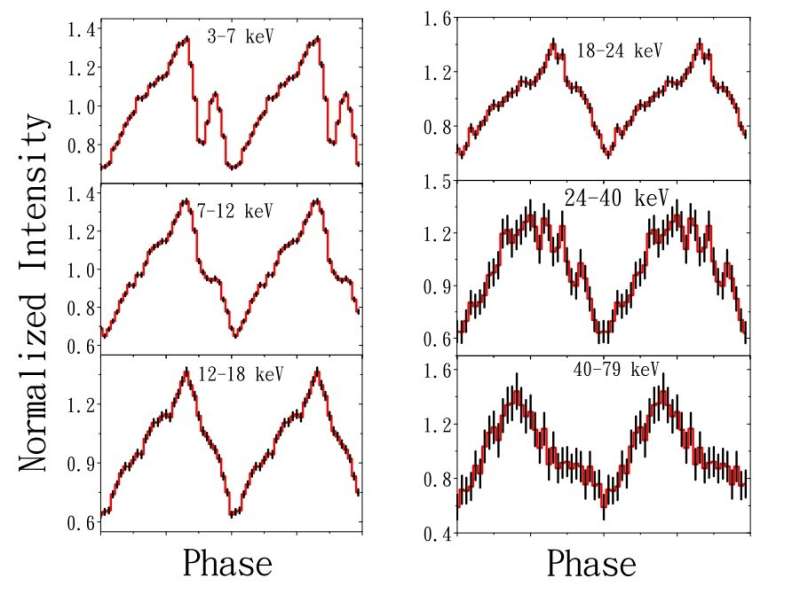October 18, 2022 report
X-ray pulsar 1E 1145.1-6141 examined with NuSTAR

Indian astronomers have employed NASA's NuSTAR spacecraft to inspect an X-ray pulsar known as 1E 1145.1-6141. Results of the observations deliver important insights into the properties and nature of this pulsar. The study was detailed in a paper published October 11 on the arXiv pre-print repository.
X-ray pulsars (also known as accretion-powered pulsars) are sources displaying strict periodic variations in X-ray intensity, consisting of a magnetized neutron star in orbit with a normal stellar companion. In these binary systems, the X-ray emission is powered by the release of gravitational potential energy as material is accreted from a massive companion.
Based on the mass of the companion star, astronomers divide X-ray binaries (XRBs) into low-mass X-ray binaries (LMXBs) and high-mass X-ray binaries (HMXBs). HMXBs with neutron stars are further categorized into Be/X-ray binaries and Supergiant X-ray binaries.
1E 1145.1-6141 is a supergiant HMXB assumed to be located some 27,700 light years away from the Earth. Previous observations of 1E 1145.1-6141 have found that it has a pulse period of about 297 seconds, orbital period of 14.4 days and a relatively low luminosity—at a level of a few undecillion erg/s.
In order to shed more light on the properties of 1E 1145.1-6141, a team of astronomers led by Manoj Ghising of the North Bengal University in Darjeeling, India, examined this pulsar using NuSTAR.
"In the paper, the temporal and spectral properties of the source 1E 1145.1-6141 have been examined by taking the data observed by NuSTAR with observation ID 30501002002," the scientists wrote.
The observations detected the coherent pulsation of 1E 1145.1-6141 at 296.653 seconds. Given that previous studies of this pulsar reported the pulse period of approximately 296.572 and 296.695 seconds, the researchers concluded that it may be in a spin equilibrium phase.
The pulse profile of 1E 1145.1-6141 in 3-79 keV turned out to be dominated by a broad single peak with an additional second peak at phase of about 0.7. The shape of the pulse profile was found to evolve with time, which suggests a change in the accretion geometry of this source.
According to the study, the pulse fraction of the pulsar first rises with energy up to about 20 keV, which is characteristic of X-ray pulsars. However, above 20 keV, a pulse fraction decrease is seen at about 32 keV, followed by an increase at higher energies.
Furthermore, the average spectra of 1E 1145.1-6141 do not showcase any overt absorption features, such as cyclotron resonant scattering features (CRSFs) in the energy range 3-79 keV. The researchers also estimated that the absorbed flux of the pulsar is about 0.6 nanoergs/cm2/s, yielding a luminosity at a level of 5 undecillion erg/s.
More information: Manoj Ghising, Mohammed Tobrej, Binay Rai, Ruchi Tamang, Bikash Chandra Paul, NuSTAR observation of X-ray pulsar 1E 1145.1-6141. arXiv:2210.05163v1 [astro-ph.HE], arxiv.org/abs/2210.05163
© 2022 Science X Network





















